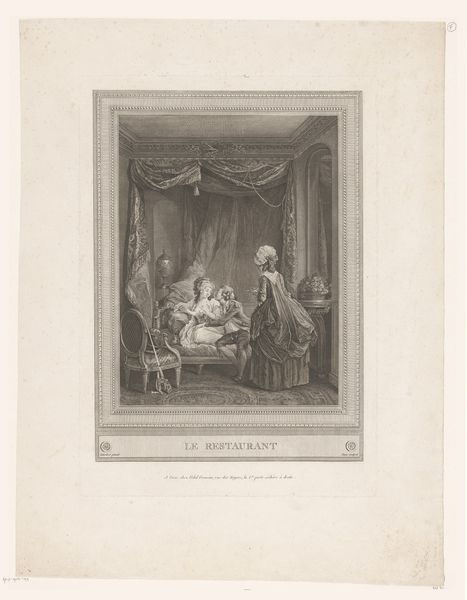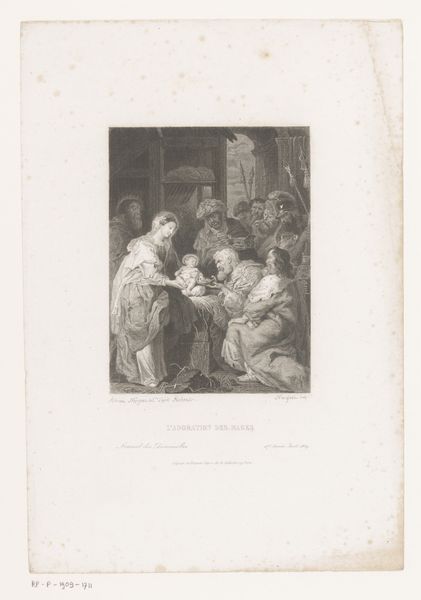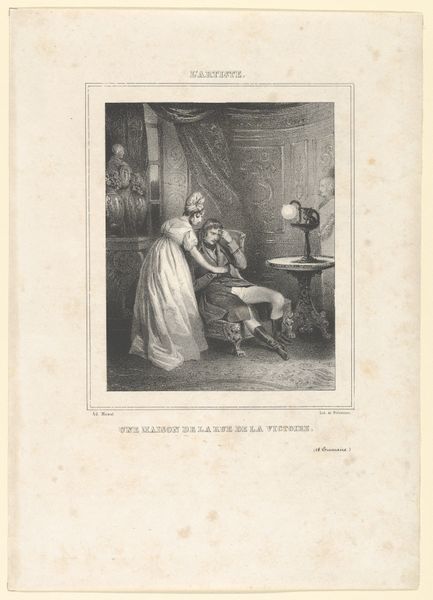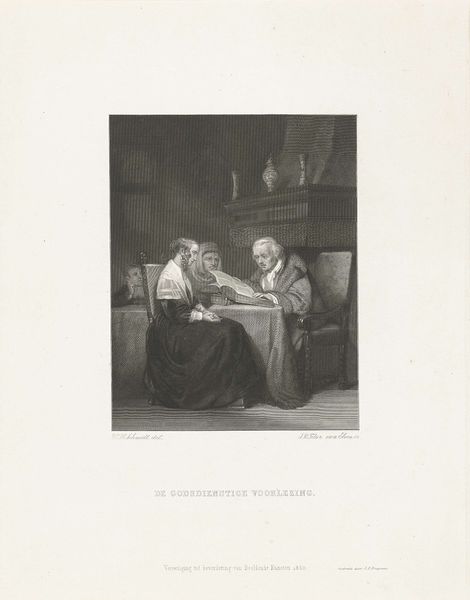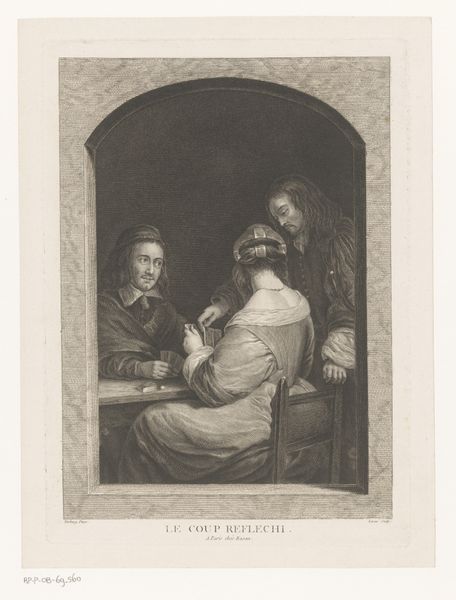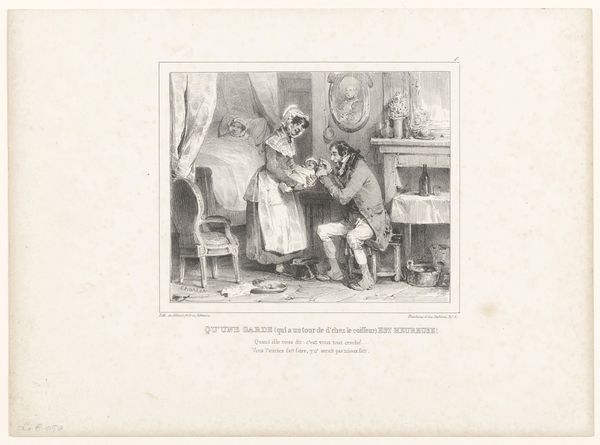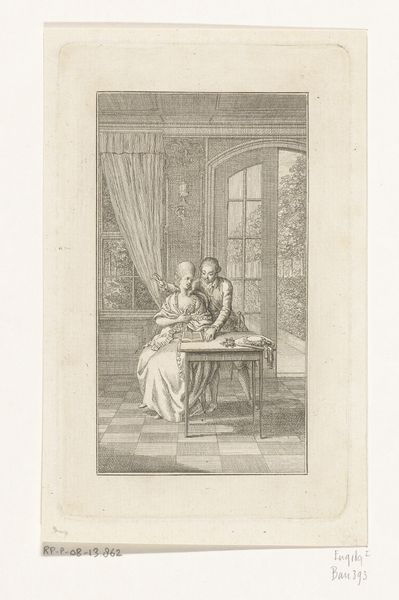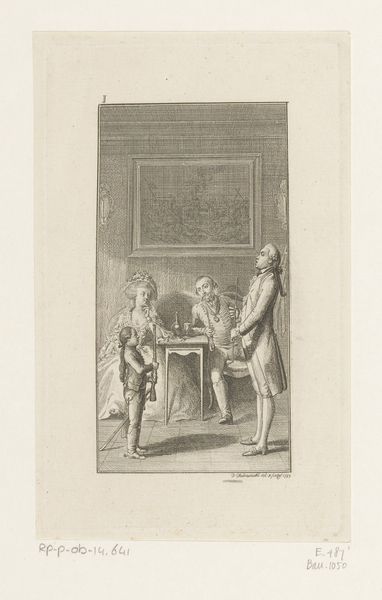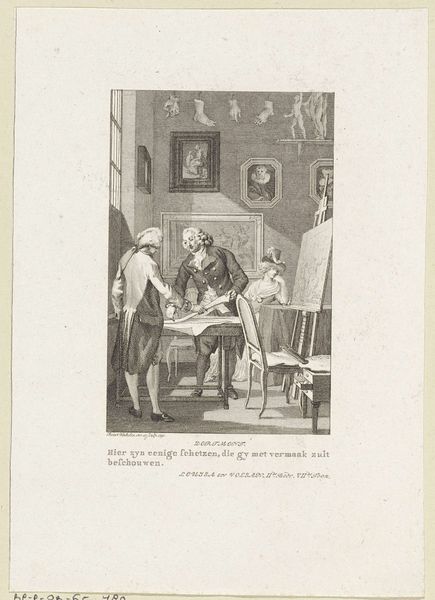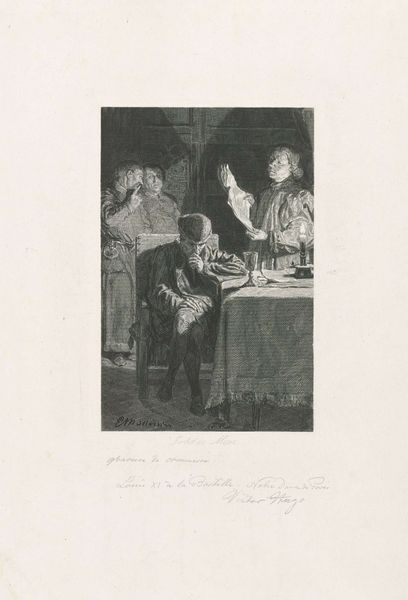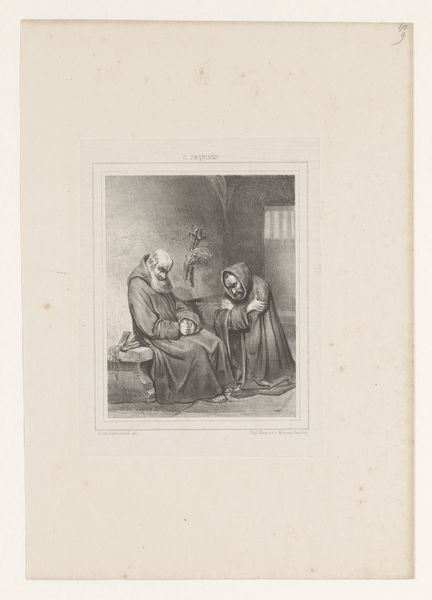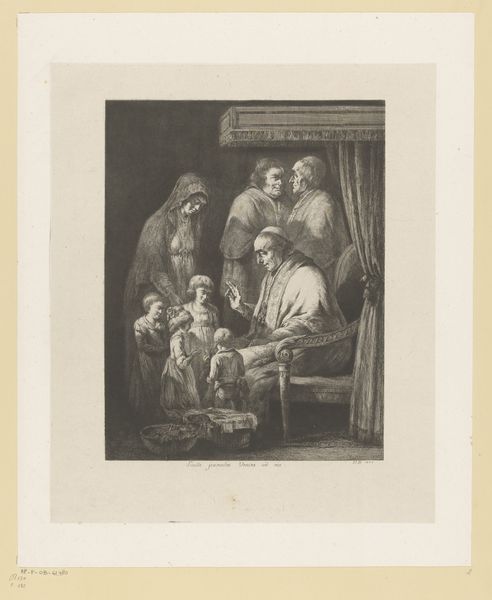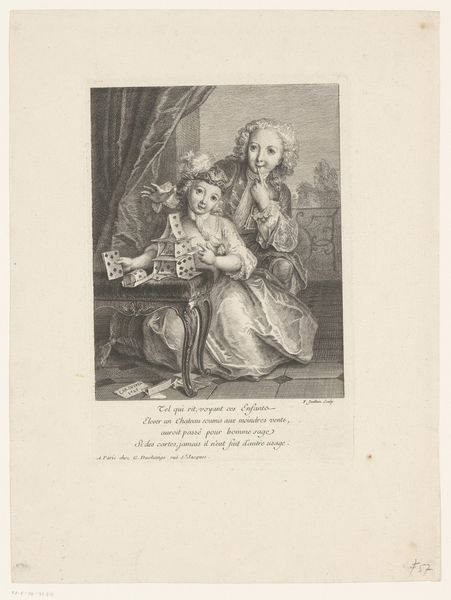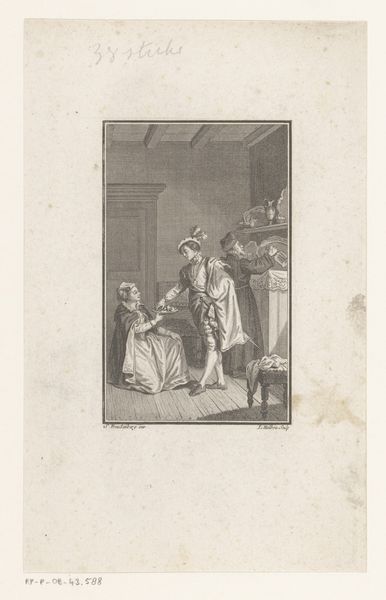
Dimensions: height 292 mm, width 219 mm
Copyright: Rijks Museum: Open Domain
Editor: This etching, "Gebed voor de maaltijd," or "Prayer Before the Meal," by Pierre François Basan, probably made somewhere between 1733 and 1797, depicts a quiet, almost austere domestic scene. I’m struck by how this everyday moment is imbued with a certain solemnity, almost as if it is on display, which feels contradictory. What does the staging of a quiet moment of domesticity communicate to you? Curator: The scene's appeal rests on constructed virtues rather than direct observation. Consider the print's public function: prints like this circulated widely, offering models of behavior. Think about the rising middle class during this period and how prints helped to construct ideas of domestic virtue and piety. Notice, for example, the family all praying with heads bowed, even though a third figure has an incomplete action, it adds to the visual rhythm. Editor: It is definitely interesting that the figures seem arranged. Is that meant to suggest these scenes should be followed closely and literally by viewers? Curator: Not necessarily literally, but aspirationally. Basan isn't just showing a family praying; he's showing a model of how a 'good' family behaves. The small details—the modest attire, the uncluttered room— all contribute to this construction. But there are layers to it. How do you think the relatively widespread dissemination of prints alters both their message and how they're viewed? Editor: That’s an interesting point. Making the private public really changes how we see and judge such imagery. Thanks for bringing that context to this picture. Curator: And thank you for noticing how social context makes a visual image more valuable and insightful.
Comments
No comments
Be the first to comment and join the conversation on the ultimate creative platform.
